(Bring Your Own Device) BYOD Security Statistics By Market Size, Usage and Facts (2025)

Updated · Oct 20, 2025

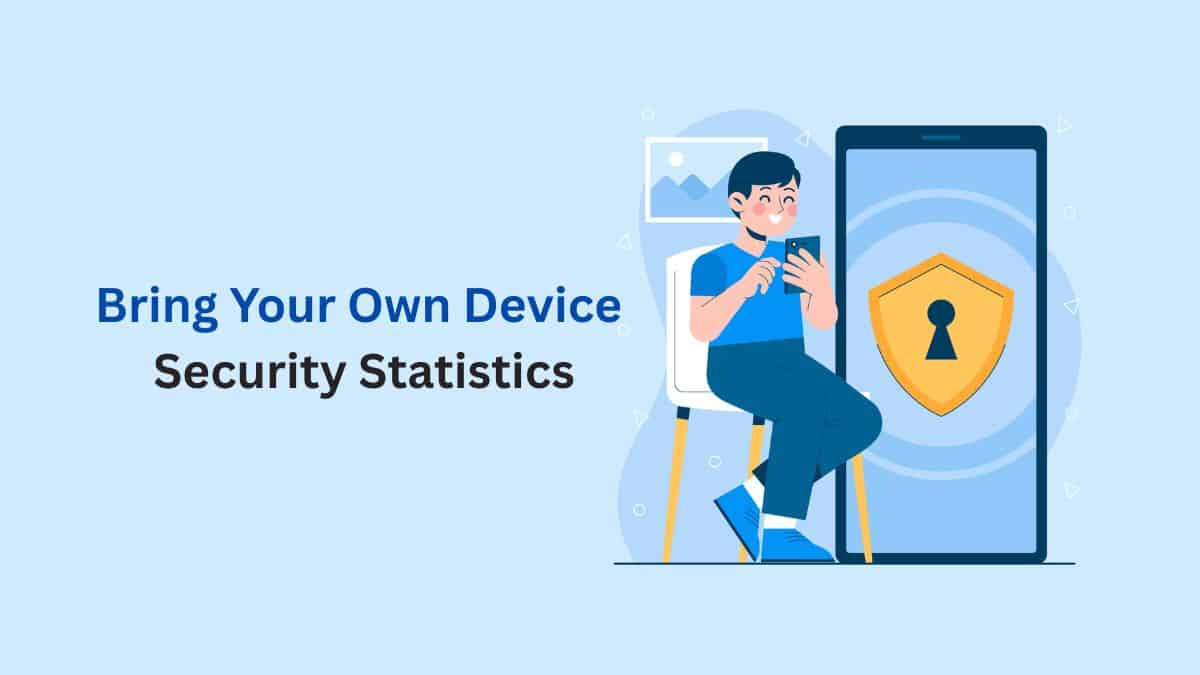
WHAT WE HAVE ON THIS PAGE
- Introduction
- Editor’s Choice
- The Current State of BYOD Adoption
- General BYOD Statistics
- BYOD User Statistics
- BYOD Market Size
- Where the Security Battle is Being Fought?
- BYOD Security Statistics
- BYOD Security Concerns Statistics
- Smartphones Leading the BYOD Charge
- BYOD Security Risks By Quantifying the Vulnerability Landscape
- Financial and Productivity Implications
- Adoption of BYOD Security Solutions
- BYOD and Emerging Threats
- Conclusion
Introduction
BYOD Statistics: The practice of Bring Your Own Device (BYOD), where employees use their personal smartphones, tablets, and laptops for work, has fundamentally changed the corporate perimeter.
Driven by the change to remote and hybrid work models, BYOD has become a foundational element of modern business operations. While it offers undeniable benefits in cost savings and productivity, it simultaneously introduces a sprawling, heterogeneous threat landscape that demands robust BYOD security measures.
In this article, I’d like to discuss more about the risks; it quantifies them, providing the definitive, data-packed overview of the current state and future trajectory of BYOD Security. Our analysis is built entirely on the latest market data, breach reports, and expert forecasts for 2025 and beyond. Let’s get started.
Editor’s Choice
- The BYOD security market is expected to rise sharply from $41.7 billion in 2024 to about $363.7 billion by 2033, according to market.us.
- Nearly 82% of companies have already introduced a Bring Your Own Device (BYOD) program.
- Around 68% of organizations notice higher productivity after adopting BYOD practices.
- Firms using BYOD smartphones save up to $341 per employee, reducing hardware costs significantly.
- Data loss remains the most serious security issue related to BYOD usage.
- About 45% of employees fail to update their passwords even after a data breach.
- Almost 48% of organizations have faced data breaches linked to unsecured personal devices.
- Nearly 64% of cybersecurity experts identify data loss and leakage as their main BYOD-related worry.
- Around 53% of companies faced mobile security incidents that caused data loss or system downtime in 2024.
- Roughly 45% of employees admit to taking risky actions on their personal mobile devices.
- Businesses can cut costs by up to 11% when switching from employer-provided devices to BYOD systems.
- The average company saves about $350 per employee each year through BYOD programs.
- Using personal devices for work can improve employee productivity by up to 55%.
- About 30% of IT leaders say that security risks are the biggest reason for delaying BYOD adoption.
- By the end of 2024, about 67% of organizations are expected to have formal BYOD policies in place.
- Around 62% of companies with BYOD programs will adopt some form of Zero Trust security framework by late 2024.
- Mobile Device Management (MDM) systems made up nearly 3% of the BYOD security market in 2023.
- AI-powered BYOD security tools are predicted to capture about 30% of the market share by the end of 2024.
The Current State of BYOD Adoption
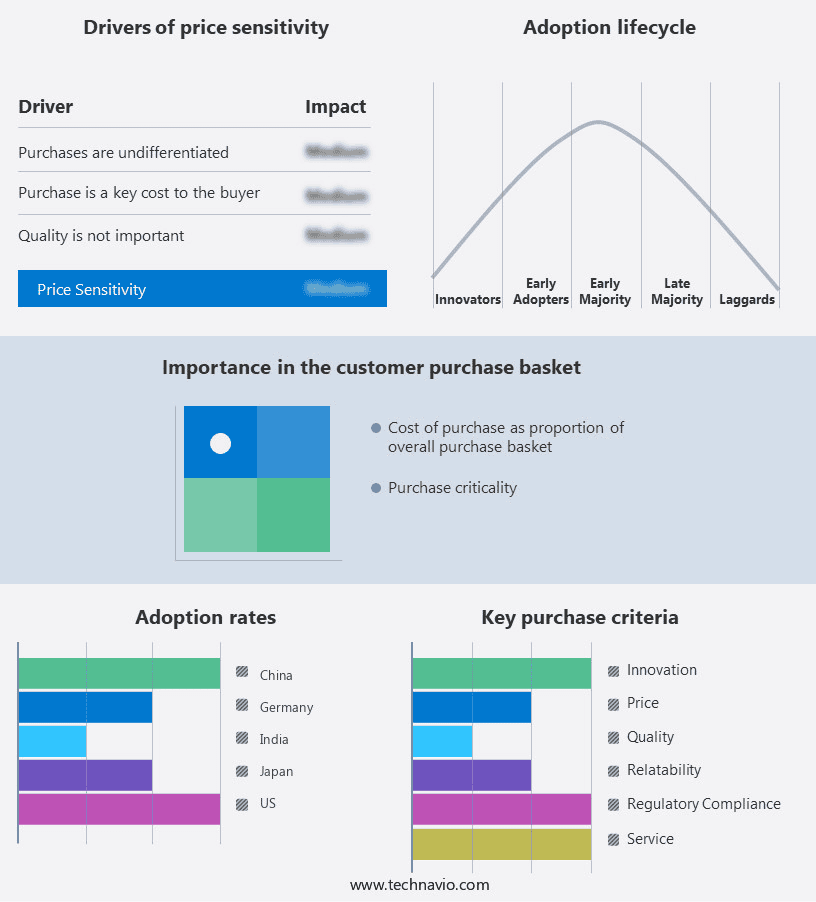
- Massive Organizational Adoption: Upwards of 82% of organizations currently operate some form of a BYOD program.
- Near-Universal Device Allowance: Nearly 95% of organizations allow employees to use personal devices for work in some capacity.
- The Unmanaged Reality: A 67% of employees use their personal devices for work, regardless of whether their employer has an official BYOD policy.
- Executive Reliance: A high percentage, specifically 97% of business executives, report accessing work accounts on their personal devices.
General BYOD Statistics
- Workplaces today operate under three main setups: some rely completely on company-issued devices, others follow a full Bring Your Own Device (BYOD) model, while many prefer a hybrid system that includes both.
- The global BYOD and enterprise mobility market is valued at around $98.8 billion and is expected to reach nearly $157.3 billion by 2026, showing a steady 16.7% CAGR.
- In the United States alone, this market is valued at over $26 billion, reflecting strong adoption across industries.
- Around 82% of organizations have already adopted BYOD practices, allowing employees to use personal devices for work-related tasks.
- Research shows that 70% of companies let employees bring their own devices, while others extend BYOD access to contractors (26%), business partners (21%), customers (18%), and suppliers (14%).
- Nearly 82% of IT executives agree that smartphones play an important role in improving employee productivity and helping them make quicker decisions.
- Over 75% of business leaders believe that mobile usage enhances innovation, teamwork, and customer service.
- About 61% of organizations expect employees to stay reachable outside the office even without providing a company device.
- Roughly 31% of IT executives report that their organizations operate fully on the BYOD model, often to cut costs and simplify device management.
- On average, companies can save about $300 per employee every year through mobile BYOD programs.
- Only 15% of organizations currently give employees company-issued smartphones, showing a growing preference for personal device use at work.
- Around 46% of firms follow a hybrid approach, offering phones to some staff while others use personal devices. Another 39% have fully shifted to BYOD with no issued devices.
- Businesses switching from company-issued phones to BYOD can save up to $341 per employee each year.
- The total cost of providing a work phone is about $1,234 per employee annually, covering hardware, service plans, software, and management. With BYOD, this cost falls to around $893.
- After introducing BYOD, 68% of organizations experience higher productivity levels among employees.
- Additional benefits include increased employee satisfaction (53%), reduced operating costs (45%), and improved workplace mobility (7%).
- Around 30% of IT teams are exploring “Bring Your Own Enhancement (BYOE)” concepts, which include wearable devices and augmented reality tools.
BYOD User Statistics
- The average employee uses 2.5 devices for work-related activities, showing how common multi-device use has become in the workplace.
- Among employees using technology, 97% rely on a desktop or laptop, 66% use smartphones, and 24% regularly use tablets for their daily tasks.
- Around 85% of Americans now own a smartphone. In 2011, ownership stood at only 35%, but it has now exceeded 95% among people aged 18–49, many of whom bring these devices to work.
- Nearly 75% of individuals believe smartphones help them be more productive at work, and 60% say smartphones make them feel more confident and prepared.
- Employees gain an average of 58 minutes of extra work time daily when they use smartphones for job-related tasks, adding up to more than 240 hours per year. Productivity levels can increase by up to 34%, especially in large organizations that adopt smartphone-enabled work processes.
- About 50.3% of employees participate in BYOD practices, while 49.7% use only company-provided devices. Around 36.1% use both company and personal devices, and 14.4% rely solely on their own.
- Even though BYOD is common, 4 out of 5 employees would still prefer to keep separate devices for personal and work use. Only 19.3% prefer using a single device for both.
- More than half of employers allow their staff to choose between company-provided and personal devices, while 49.7% do not offer that option.
- Around 48% of employees believe BYOD adoption would increase if IT departments had no access to personal data stored on their devices. Among surveyed employees, 20% expected adoption to increase significantly and 28% predicted a moderate rise.
- Nearly 20% of organizations provide no technical support for employees using personal devices. Around 25% offer informal help, 26% only support approved devices, and 22% deliver full BYOD support programs.
BYOD Market Size
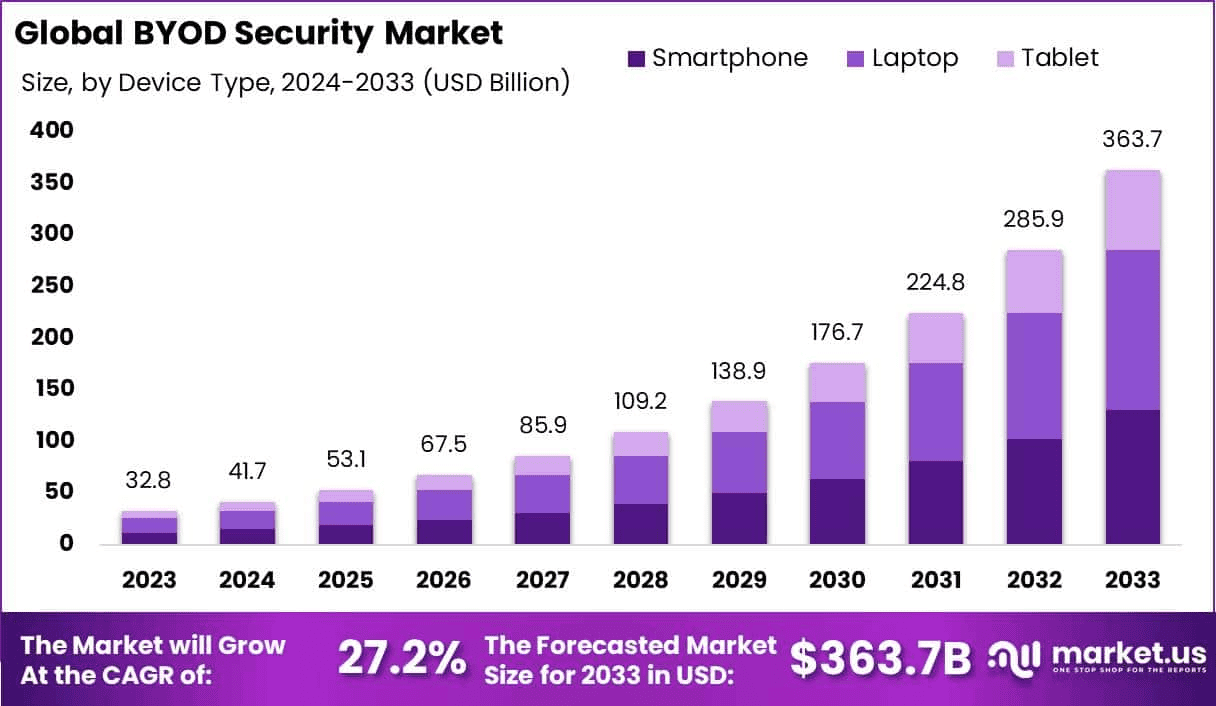
According to Market.us, the market for securing personal devices used for work is undergoing an astonishing expansion.
- The Global BYOD Security Market is projected to reach USD 363.7 billion by 2033, growing from USD 32.8 billion in 2023 at a CAGR of 27.2% between 2024 and 2033.
- In 2023, North America led the global market with a 36.4% share, generating about USD 11.9 billion in revenue.
- The growing use of personal devices for work has made security a critical focus area for companies across all sectors.
- Reports indicate that the BYOD market has already reached nearly USD 100 billion, showing its rapid adoption worldwide.
- Around 82% of organizations now have a BYOD policy, proving that the use of personal devices at work has become standard practice.
- Productivity gains are a key reason for this shift, with 68% of organizations reporting better efficiency after adopting BYOD.
- Companies also achieve notable cost savings, with potential savings of up to USD 341 per employee when using personal smartphones instead of company-issued ones.
- Security concerns remain the main challenge, with data loss identified as the most common risk for businesses implementing BYOD systems.
- A concerning 45% of employees fail to change their passwords even after a data breach, which adds further vulnerability to corporate systems.
- Demand for remote accessibility continues to increase, as 61% of organizations expect employees to remain reachable without company-provided phones.
- Nearly half of all businesses now ask employees to use their own smartphones for work purposes, showing how BYOD has become a regular part of business operations.
- In 2023, the Laptop segment accounted for the largest share of the market, holding 42.5%, followed by the Mobile Data Security segment at 47.4%, and the Large Enterprises segment at 58.3%.
- North America’s leadership in the market is linked to its strong digital infrastructure and high rate of mobile technology adoption across industries.
| Productivity Boost | 68% of organizations report increased productivity after adopting BYOD policies. |
| Employee Cost Savings |
Companies can save up to $341 per employee by switching to personal smartphones instead of providing them. |
|
Mobility & Satisfaction |
The rise of remote work and the use of familiar, flexible personal technology drive adoption. |
Where the Security Battle is Being Fought?
As of 2023, the market share analysis clearly defines the biggest areas of investment and concern:
#1. Device Dominance: The Laptop’s Crucial Role
While smartphones drive the majority of overall BYOD revenue, the security focus is still heavily on traditional workhorses.
- The Laptop segment dominated the BYOD security market in 2023, commanding more than a 42.5% market share. This reflects the laptop’s continued versatility for complex tasks and its central role in modern remote and hybrid work environments.
#2. Segment Leadership: Securing the Mobile Data Pipeline
The data being accessed and stored on these mobile devices is the top priority for security professionals.
- Mobile Data Security was the leading segment in 2023, capturing over 47.4% market share. The volume of sensitive corporate data living on or passing through personal phones and tablets necessitates this intense focus on data-level protection and compliance.
#3. Enterprise Investment: The Titans of Security Spending
The scale of risk at the world’s largest companies mandates the most rigorous security investments.
- Large Enterprises led the security market in 2023 with more than a 58.3% share. Their vast IT infrastructures and immense data volumes require comprehensive.
#4. The Global: North America’s Cyber Focus
A region’s technological maturity and its emphasis on digital defense dictate its market leadership.
- North America remains the global frontrunner, holding the largest share of the BYOD security market at 36.4%, generating USD 11.9 billion in revenue.
BYOD Security Statistics
- Many companies choose BYOD because it reduces costs and increases employee satisfaction and efficiency. However, security remains the biggest concern for organizations.
- About 30% of companies say that security risks are the main reason stopping them from adopting BYOD, while 15% report that even employees are worried about data protection.
- Nearly 62% of cybersecurity professionals believe that data loss and leaks are the most serious threats linked to BYOD usage.
- Around 54% of companies are concerned about employees downloading unsafe content or apps on their personal devices.
- About 53% worry about lost or stolen devices exposing company data.
- Around 51% are concerned about unauthorized access to business systems and malware infections.
- Nearly 48% mention vulnerabilities in connected devices, and 45% say they struggle to maintain control over endpoint security.
- To address these challenges, firms such as CrowdStrike provide tools to protect BYOD users against data breaches and cyberattacks.
- Research shows that 45% of employees do not change their passwords even after a breach. Although 79% understand the risks of weak passwords, 51% still rely on memory, and 65% reuse similar password variations.
- Around 30% of organizations have no control or visibility over how employees use mobile messaging on personal devices.
- Nearly 41% can monitor file sharing, 37% can track cloud apps, and only 28% have visibility over private or public messages sent by employees.
- Almost 75% of companies can see employee emails on BYOD devices, but visibility drops in other areas such as calendars, contact lists, and messaging apps.
- Only 57% of firms can monitor calendars and contacts, while 50% can oversee messaging apps. Less than half can track document sharing, cloud backups, or file editing activities.
- Around 22% of companies confirm that employee devices downloaded malware within the last year, while 49% are unsure whether this has occurred.
- About 30% of companies lack proper malware protection measures, and 41% depend only on endpoint security solutions.
- Another 22% of organizations report that employees have connected to malicious Wi-Fi networks in the past year, and 51% do not know if such connections have happened.
BYOD Security Concerns Statistics
- Around 60% of IT professionals consider security their top concern when allowing employees to use personal devices for work.
- Nearly 84% of IT leaders worry about the rise of shadow IT, where employees use unauthorized applications or systems.
- The most common risks linked to BYOD include network attacks, software flaws, and ransomware infections.
- More than 20% of organizations reported malware infections caused by unmanaged personal devices in the past year.
- Nearly half of IT professionals remain unsure if similar incidents have affected their organization, suggesting that the actual figure may be higher.
- Allowing unmanaged devices increases the chance of unauthorized applications being used, creating hidden risks for IT teams.
- Lack of visibility into employee-used applications affects 32% of organizations, while 24% lack proper SaaS or asset management systems.
- About 31% of businesses say their employees move faster than IT can manage, creating security gaps.
- 29% of IT teams face difficulties in communicating security policies with partners, and 36% admit limited resources make it difficult to address shadow IT.
- Other major security concerns include overly permissive access rights (14%), fatigue from frequent multi-factor authentication (20%), and stolen or shared credentials (24%).
- Threats such as network attacks (40%), software exploits (31%), ransomware (31%), and unsecured networks (25%) are among the most reported risks.
- According to Verizon’s 2024 report, more than 90% of security incidents involving lost or stolen devices led to data breaches.
- Around 88% of such breaches involved internal actors, increasing insider threats.
- Personal data was exposed in 97% of these cases, internal business data in 42%, and financial data in 25%.
- About 68% of breaches were caused by human error or social engineering.
- Laptops remain the most frequently lost or stolen devices in enterprises.
- Misuse of personal privileges for profit has grown sharply, as personal devices hold valuable private information.
- Most people lose devices in supposedly safe places like their home, car, or office, and are six times more likely to be pickpocketed at work than in a bar.
- Around 97% of executives use personal devices to access work accounts, and 95% use them for multi-factor authentication.
- Nearly 89% of executives believe companies should provide cybersecurity software for protection.
- About 88% receive work-related phishing or spam messages on personal accounts, especially in smaller firms with fewer than 1,000 employees.
- Eight out of ten executives see monitoring of personal devices as an invasion of privacy, yet 73% are open to installing company security software on them.
- Around 80% of executives send work emails or texts from personal devices, higher than the 74% average among other employees.
- Three-quarters of executives say their organizations have faced cyberattacks, with high rates seen in Information Research (100%), Education (89%), and Manufacturing (81%).
- About 58% of executives say their spouse or partner can access their device, 38% say their children can, and only 30% maintain exclusive access.
Smartphones Leading the BYOD Charge
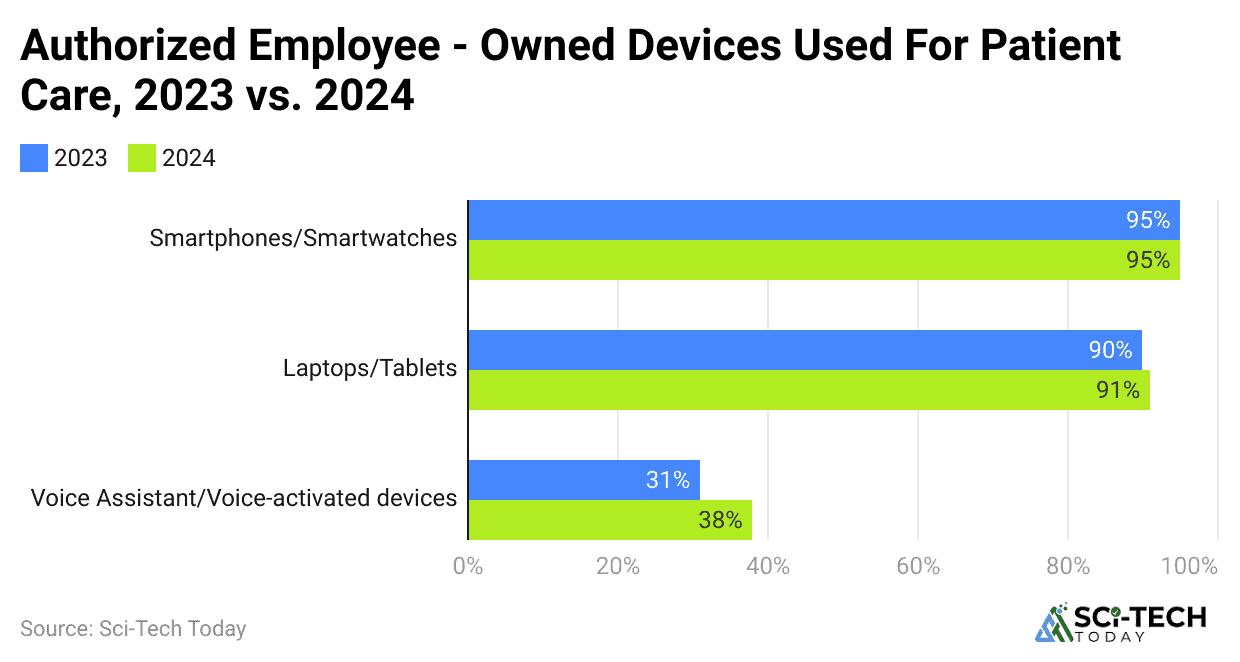
Looking at the broader BYOD ecosystem (not just the security market), smartphones are the clear engine of growth.
- Smartphones, tablets, and laptops all facilitate BYOD programs, but smartphones accounted for over 50% of the overall revenue in 2021.
- The development of mobile applications that replicate essential work tools, like those similar to Microsoft Word, Excel, and PowerPoint, has cemented the smartphone’s role as a primary business device.
BYOD Security Risks By Quantifying the Vulnerability Landscape
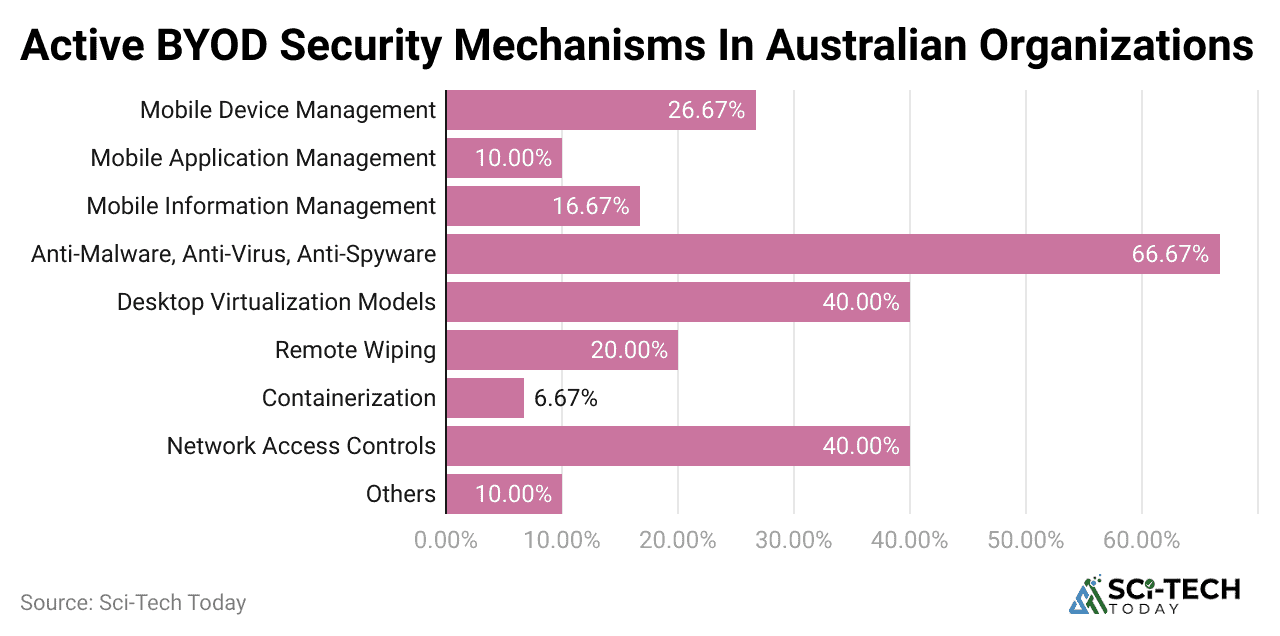
- Approximately 48% of organizations have reported suffering a data breach that was directly linked to an unsecured or unmanaged personal device within the past year.
- Incident Rate: Over 53% of organizations experienced a mobile or IoT-related security incident that resulted in data loss or downtime during 2024..
- Data loss and leakage is cited as the number one concern for approximately 64% of cybersecurity professionals when considering BYOD security protocols.
- More than one in five organizations confirmed that a digital asset had downloaded malware as a direct result of connecting an unmanaged device to the network within the last 12 months.
- A concerning 45% of employees admitted to engaging in actions they knew were risky on mobile devices.
- A majority of security leaders, around 84%, are worried about the risks introduced by “Shadow IT”.
- Nearly 45% of employees confess to using the same password for both work and personal accounts.
| Organizations reporting a breach linked to unsecured personal devices | 48% |
| Cybersecurity professionals naming data loss as the top BYOD security concern | 64% |
| Percentage of employees who admit to risky mobile behavior | 45% |
| Percentage of organizations who experienced a mobile-related incident in 2024 | 53% |
Financial and Productivity Implications
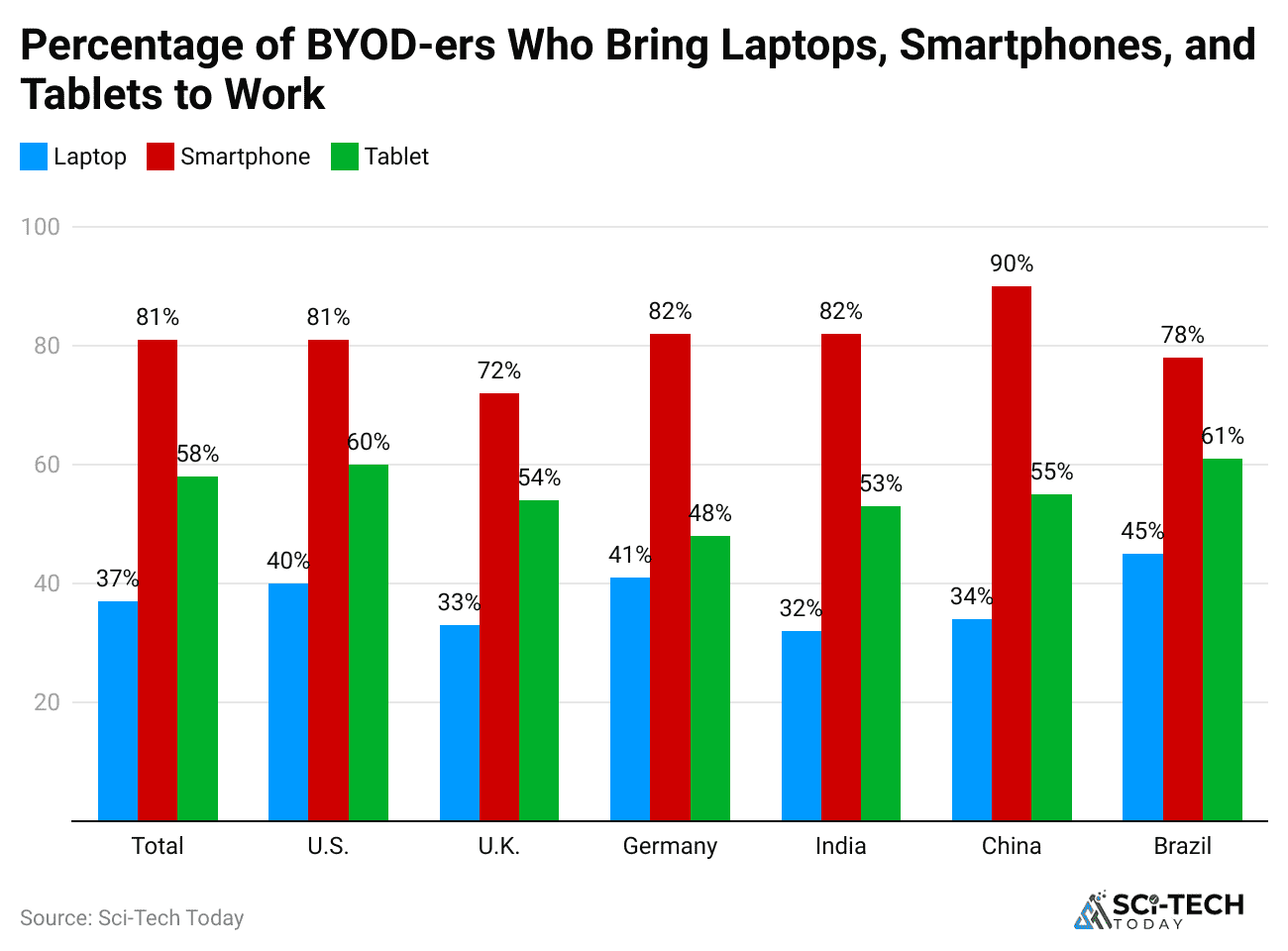
- Companies can realize cost savings of up to 11% by transitioning from providing Employer-Provided Devices (EPD) to a fully implemented BYOD policy for their staff.
- Implementing a sound BYOD program can save an organization an average of $350 per team member each year.
- Boosted Productivity and Job Satisfaction: Working with personal devices is linked to boosting employee productivity by up to 55% and increasing overall job satisfaction by 56%.
- The average cost of a data breach is estimated to be in the millions of dollars, meaning the savings gained from a BYOD program can be negated instantly by a single.
- Despite the clear benefits, 30% of IT leaders still cite information security concerns as the single biggest obstacle to officially adopting a comprehensive BYOD program.
| Potential savings from switching to BYOD (percentage) | 11% |
| Average annual cost saving per BYOD employee | 350% |
| Productivity increase linked to BYOD usage | 55% |
| IT leaders citing security as the main obstacle to BYOD adoption | 30% |
Adoption of BYOD Security Solutions
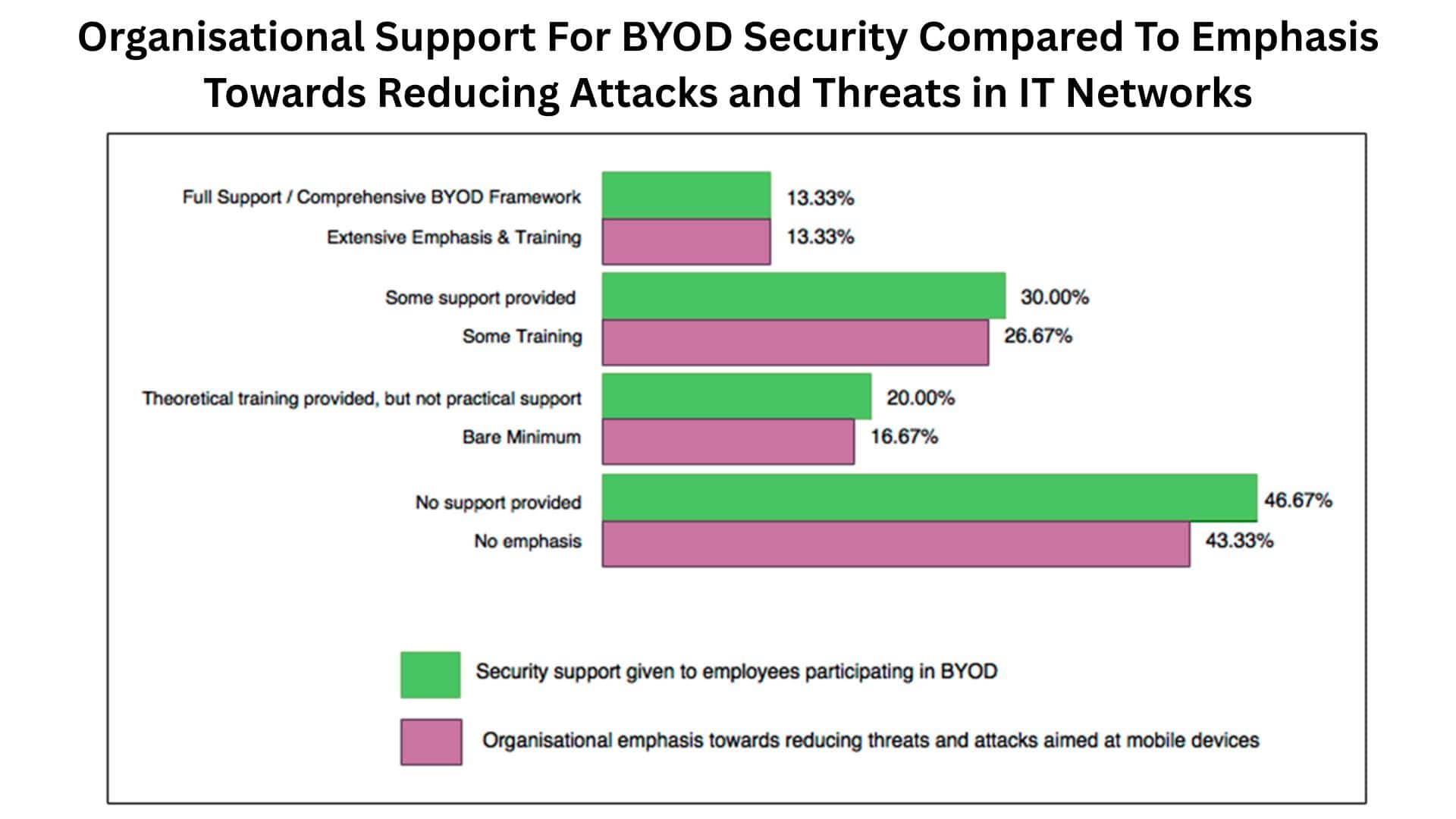
- The number of companies operating with a formal, written BYOD policy rose from 51% in 2023 to an estimated 67% by late 2024.
- By the close of 2024, it is projected that 62% of organizations with BYOD policies will have implemented at least a partial Zero Trust security strategy,.
- Mobile Device Management (MDM) solutions held the largest share of the BYOD security market, approximately 43.3% in 2023.
- AI-driven security solutions are expected to constitute nearly 30% of the overall BYOD security market share by 2024.
- A substantial 73% of employees have stated they would allow their employer to install company security software on their personal device to improve operational BYOD security.
- The Large Enterprises segment is poised to capture over 66.4% of the total BYOD security market revenue by 2035.
| Organizations with a formal BYOD policy (Late 2024) | 67% |
| Organizations with a partial Zero Trust strategy (End of 2024) | 62% |
| Market share of Mobile Device Management (MDM) (2023) | 43.3% |
| Projected market share of AI-driven BYOD security solutions (2024) | 30% |
BYOD and Emerging Threats
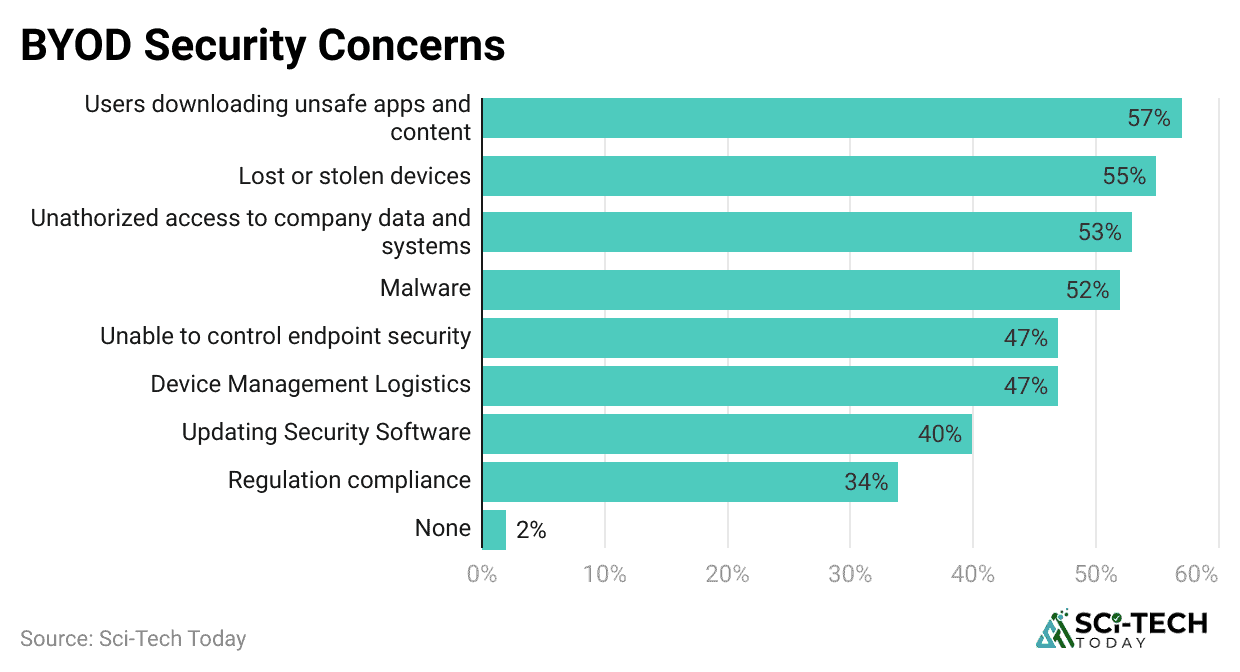
- The market for wearables and other endpoints is projected to record a high CAGR of 16.43% through 2030.
- The proliferation of 5G-enabled smart devices is expected to contribute a 3.2% increase to the overall BYOD market CAGR.
- The rising cost of cyber-insurance premiums, which is directly linked to the presence of unmanaged endpoints, is acting as a major restraint with a projected -1.8% impact on the CAGR in North America and Europe.
- While North America currently dominates the market for BYOD security solutions, the Asia Pacific region is projected to be the fastest-growing market, with a forecast 16.30% CAGR.
- Modern strategies are heavily integrating solutions like Virtual Desktop Infrastructure (VDI) and Secure Access Service Edge (SASE) to manage unmanaged devices.
Conclusion
Overall, Bring Your Own Device (BYOD) is the new corporate standard, with adoption rates nearing 95% and the supporting BYOD security market swelling toward an estimated $276 billion by 2030. This trend is driven by an impressive 55% increase in productivity and significant cost-saving opportunities.
However, these gains come with a quantified cost of risk. The fact that nearly 50% of organizations have experienced a breach linked to an unsecured personal device serves as the starkest warning.
So, organizations that embrace a Zero Trust model, invest in MDM/UEM platforms, and commit to continuous employee training will be the ones that effectively harness the benefits of a highly mobile, flexible workforce without succumbing to the escalating threat of mobile-induced data breaches. I hope you guys, like this piece of content, if you got any questions, kindly let us know, we will try to answer you ASAP, thanks for staying till the end.
FAQ.
Adoption is nearly universal. Upwards of 82% of organizations currently operate some form of a formal BYOD program, and nearly 95% allow employees to use personal devices for work in some capacity.
The main drivers are productivity and cost savings. 68% of organizations report increased productivity after adopting BYOD, and companies can save an average of $350 per employee annually through reduced hardware and maintenance costs.
The market is experiencing hyper-growth. The BYOD security market is projected to soar from $41.7 billion in 2024 to a $363.7 billion by 2033, reflecting a Compound Annual Growth Rate (CAGR) of 27.2%.
Smartphones are the primary drivers of revenue and adoption in the broader BYOD ecosystem, accounting for over 50% of the overall revenue in 2021. However, the Laptop segment dominates the security market investment, commanding over a 42.5% market share.
A significant proportion of breaches are directly traceable to personal devices. Approximately 48% of organizations have reported suffering a data breach linked to an unsecured or unmanaged personal device within the past year.
Data loss and leakage is cited as the number one concern for approximately 64% of cybersecurity professionals due to the difficulty in controlling corporate data location on personal hardware.
Risky behavior is a major factor in vulnerability. A concerning 45% of employees admitted to engaging in actions they knew were risky on mobile devices, and nearly 45% confess to reusing the same password for both work and personal accounts.
Mobile Device Management (MDM) solutions held the largest share of the BYOD security market (43.3% in 2023). Furthermore, Zero Trust security strategies are seeing rapid adoption, with 62% of organizations expected to have a partial implementation by the close of 2024.

Joseph D'Souza founded Sci-Tech Today as a personal passion project to share statistics, expert analysis, product reviews, and experiences with tech gadgets. Over time, it evolved into a full-scale tech blog specializing in core science and technology. Founded in 2004 by Joseph D’Souza, Sci-Tech Today has become a leading voice in the realms of science and technology. This platform is dedicated to delivering in-depth, well-researched statistics, facts, charts, and graphs that industry experts rigorously verify. The aim is to illuminate the complexities of technological innovations and scientific discoveries through clear and comprehensive information.








